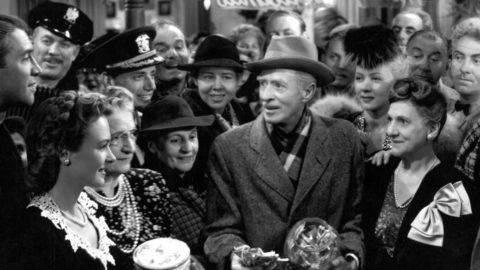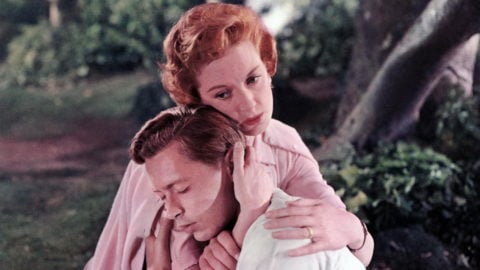Cinema ’67 Revisited: Blow-Up
In my 2008 book Pictures at a Revolution, I approached the dramatic changes in movie culture in the 1960s through the development, production, and reception of each of the five nominees for 1967’s Best Picture Academy Award: Bonnie and Clyde, The Graduate, In the Heat of the Night, Guess Who’s Coming to Dinner, and Doctor Dolittle. In this biweekly column, I’m revisiting 1967 from a different angle. As the masterpieces, pathbreakers, and oddities of that landmark year reach their golden anniversaries, I’ll try to offer a sense of what it might have felt like to be an avid moviegoer 50 years ago, discovering these films as they opened.
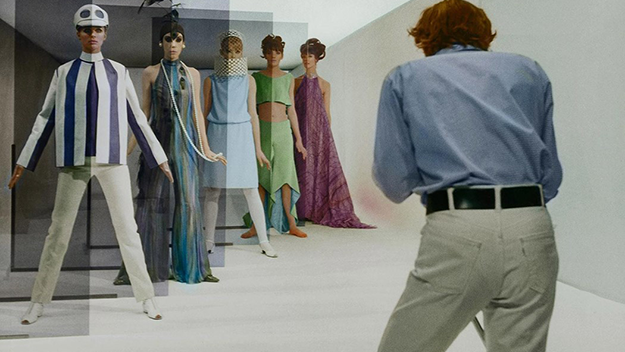
The first must-see movie of 1967 actually arrived in 1966, and for many of those in the surprisingly large audience it found, it was more than a film—it was the demarcation of a cultural battle line. Michelangelo Antonioni’s Blow-Up opened in New York City’s now-demolished, then first-tier Coronet Theater on 3rd Avenue and 59th Street in late December. The release came just in time for awards consideration, a strategy that paid off almost immediately. The National Society of Film Critics had just been formed as a rebuke to what its members saw as the New York Film Critics Circle’s ritual rubber-stamping of Hollywood piety and blandness. The new organization wasn’t really national—most of the dozen or so founding critics were from New York City—but no matter; it inaugurated itself in a newsmaking way, awarding Blow-Up (the hyphen was in all the ads, but not on screen) Best Film and Best Director. The choice was as much a sneer at their rival group’s selection that year—Fred Zinnemann’s prestige historical drama A Man for All Seasons—as it was a seal of approval for Antonioni. Remarkably, it took the Academy, at the time frequently dismissed as reactionary and backwards, to unite the two movie universes; in February, it nominated Blow-Up for Oscars for Best Director and Best Original Screenplay.
That Antonioni came to be on the same lists as filmmakers like Zinnemann and Billy Wilder (nominated for co-writing The Fortune Cookie) says a great deal about what, in retrospect, looks like a moment of movie-biz perestroika. By the beginning of 1967, films from other countries were a regular part of the diet of many American movie lovers, and not just those who lived in New York and Los Angeles. Federico Fellini, Ingmar Bergman, Akira Kurosawa, and Francois Truffaut may not have been household names in every household, but some of them were getting close. Fellini’s La Dolce vita, for instance, had grossed $19 million in the U.S., the equivalent of $150 million today. The studios took notice—with interest, alarm, and ultimately a desire to co-opt these renegades as their own. By the time Blow-Up arrived, Universal had already paid for Truffaut to shoot his first (and, it turned out, only) English-language picture, Fahrenheit 451, and Roman Polanski would shortly start work on Rosemary’s Baby for Paramount. As for Antonioni’s film, it was not an import or an acquisition, but the first entry in a three-picture deal the director had made with MGM after the success of 1960’s L’Avventura and 1964’s Red Desert, a commitment the studio would fulfill over the next decade with Zabriskie Point and The Passenger. A truce between art and commerce seemed on the verge of being signed, even if it was not clear which side was changing its ways.
With Blow-Up, however, it was clear: Antonioni had compromised nothing. The film starts as a quasi-Hitchcockian thriller about a London fashion photographer who witnesses the aftermath of a murder, but ends as something more metaphysical, environmental, and philosophical. “The English thought me mad,” he told Rex Reed, “But I thought them mad, with all their unions and rules . . . Now everyone talks of the wonderful grass and the wonderful trees, but I painted the grass with green paint and I painted the streets and the buildings with white paint. I even painted the tree trunks. Everything.” Antonioni also put sexual content on screen that, though not graphic by 21st-century standards, was so much more explicit than anything Hollywood had previously allowed that the Production Code, then breathing its last, refused to approve the film. When that happened, MGM helped drive a stake through the Code’s heart by simply creating a subsidiary company and releasing Blow-Up under that banner instead.
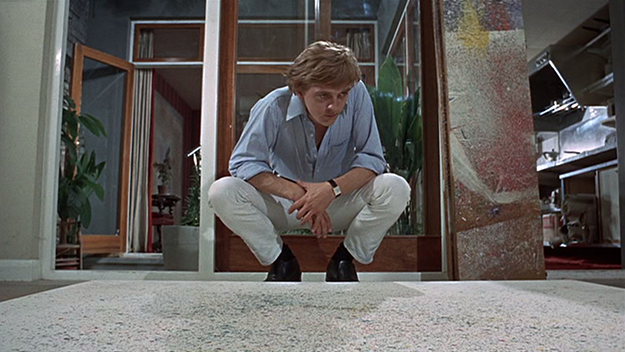
People had been awaiting the movie for months. Back in April, Time magazine had done a cover story on “London: The Swinging City”—Mary Quant! Harold Pinter! Terence Stamp! The Rolling Stones, “whose music is most in right now”—and had teased the then-still-untitled project by noting that “for the past several weeks, Michelangelo Antonioni has been prowling the streets…looking toward making a film on—of all things—the swinging London scene. His cryptic testimonial to what he has seen: ‘London offers the best and the worst in the world.’”
American audiences drank it in with passion and an exploratory spirit that caught many off-guard. In his admiring essay “Notes on a Year with Blow-Up,” the critic Stanley Kauffmann wrote, “The end of a decade that had seen the rise of a Film Generation … was capped with a work by a recognized master that was available around the country. With Blow-Up, people in Michigan and South Carolina and Vermont knew—within weeks of the New York premiere—the film that was being discussed.” And widely praised; perhaps the biggest surprise about Blow-Up was how many people across the cultural spectrum became its impassioned adherents. Even The New York Times’s Bosley Crowther, who more than once late in his career found himself on the wrong side of debates about artistic freedom and innovation, publicly chastised his colleagues in the New York Film Critics Circle for overlooking the film for its top award, and wrote four impassioned defenses of Antonioni in two weeks. Time predicted that Blow-Up’s costar Vanessa Redgrave might become “the Garbo of the ’60s” (a line Warner Brothers immediately swiped for its Camelot ad campaign).
There were some skeptics. Pauline Kael said the movie could be “taken seriously…only by the same sort of cultural diehards who are still sending out five-page single-spaced letters on their interpretation of [Last Year at] Marienbad.” She seemed to anticipate the entirety of film conversation on the Internet when she added, “People identify with it so strongly, they get upset if you don’t like it—as if you were rejecting not just the movie but them.” And Variety’s critic complained, “It is doubtful that the general public (anymore than this reviewer) will get the ‘message’ of this film, shrouded as it is in shadings and symbols, in mysterious mummery and way out treatment,” calling its prospects for general release questionable. Who in “real America” would tolerate a movie that, like L’Avventura, sets up a mystery it becomes progressively less interested in solving, and ends with a scene in which the protagonist (David Hemmings) watches two mimes play tennis without a ball and eventually consents to joining their shared reality—a “way out,” everything-is-subjective, nothing-is-resolved denouement that launched a tide of complaints, essays, and New Yorker cartoons.
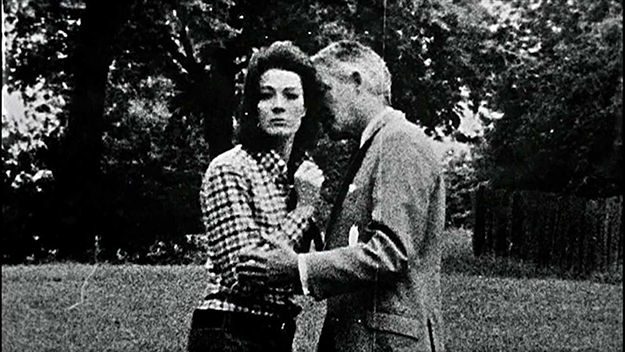
Soon, though, even Variety had to admit that its forecast had been wrong. A couple of months into Blow-Up’s release, a headline in the trade paper read, “Antonioni Pic Reactions: Audible Beefs, Refunds, But His Films Return.” As did his fans; repeat business was more than enough to compensate for walkouts, and by year’s end, the movie seen as too arty for America would be the 14th highest grosser of 1967, taking in more than ten times what MGM had invested.
Antonioni was no enfant terrible; when Blow-Up opened, he was already 55 and given to stern and gnomic statements about decadence and the emptiness of youth (“I don’t think there is any love in this world…Also, there is no feeling for family. No religion…LSD and mescaline are better for [the young] than love.”) Though many critics at the time insisted that that movie was a portrayal of what Time called “the sort of squiggly little fungus that is apt to grow in a decaying society,” 50 years later, Blow-Up doesn’t feel as condemning or censorious. The film observes and reports on its new world unflinchingly and with fascination; sometimes that shades into horror or repulsion, but sometimes into humor or (as in the last scene) a sense of immense, shocked, trippy possibility. There couldn’t have been a more fitting gateway through which movie lovers could enter 1967.
How to see it: Blow-Up is available for rental on Amazon and iTunes; Criterion will release a 4K restoration on DVD and Blu-ray on Mar. 28.
Mark Harris is the author of Pictures at a Revolution: Five Movies and the Birth of the New Hollywood (2008) and Five Came Back (2014).





